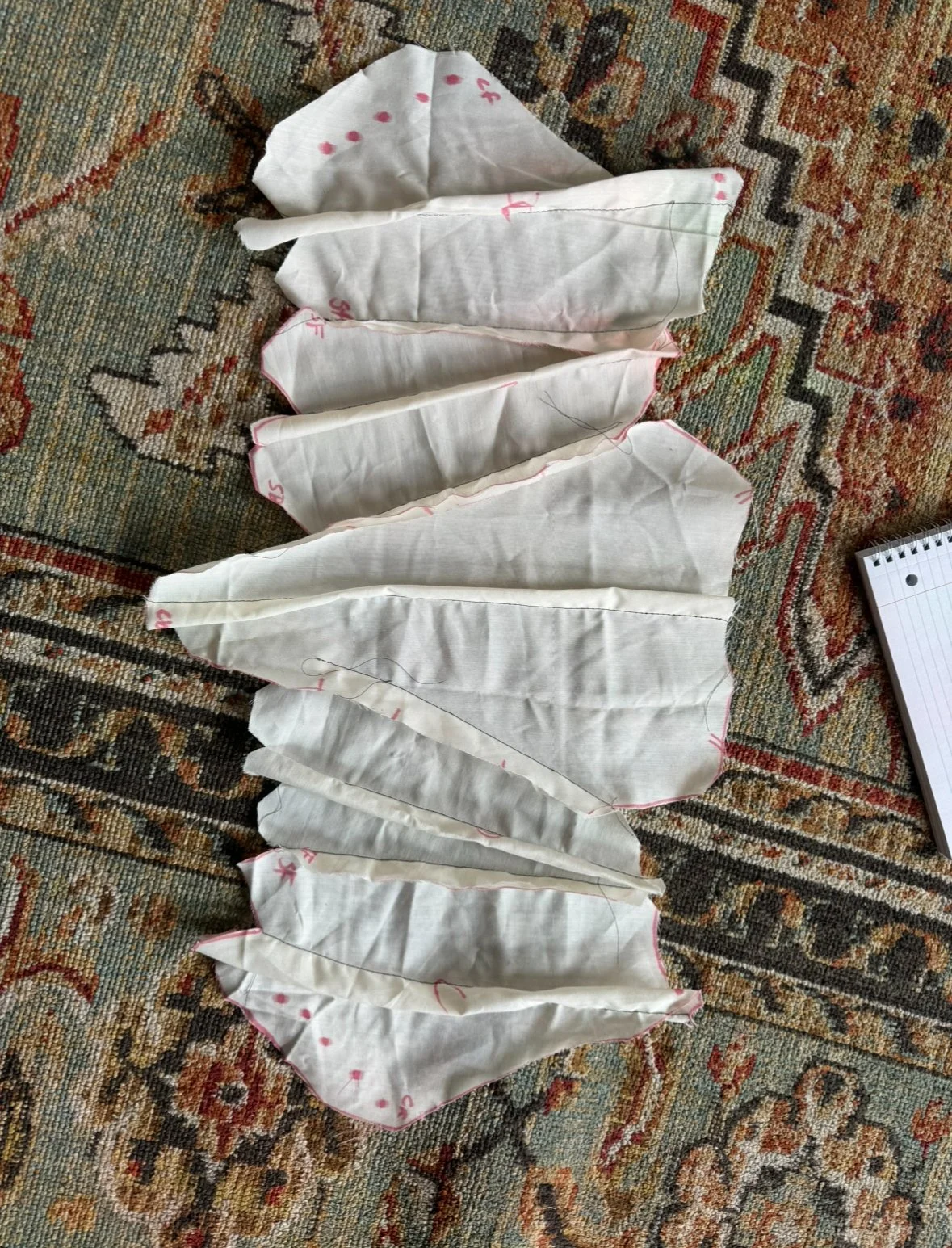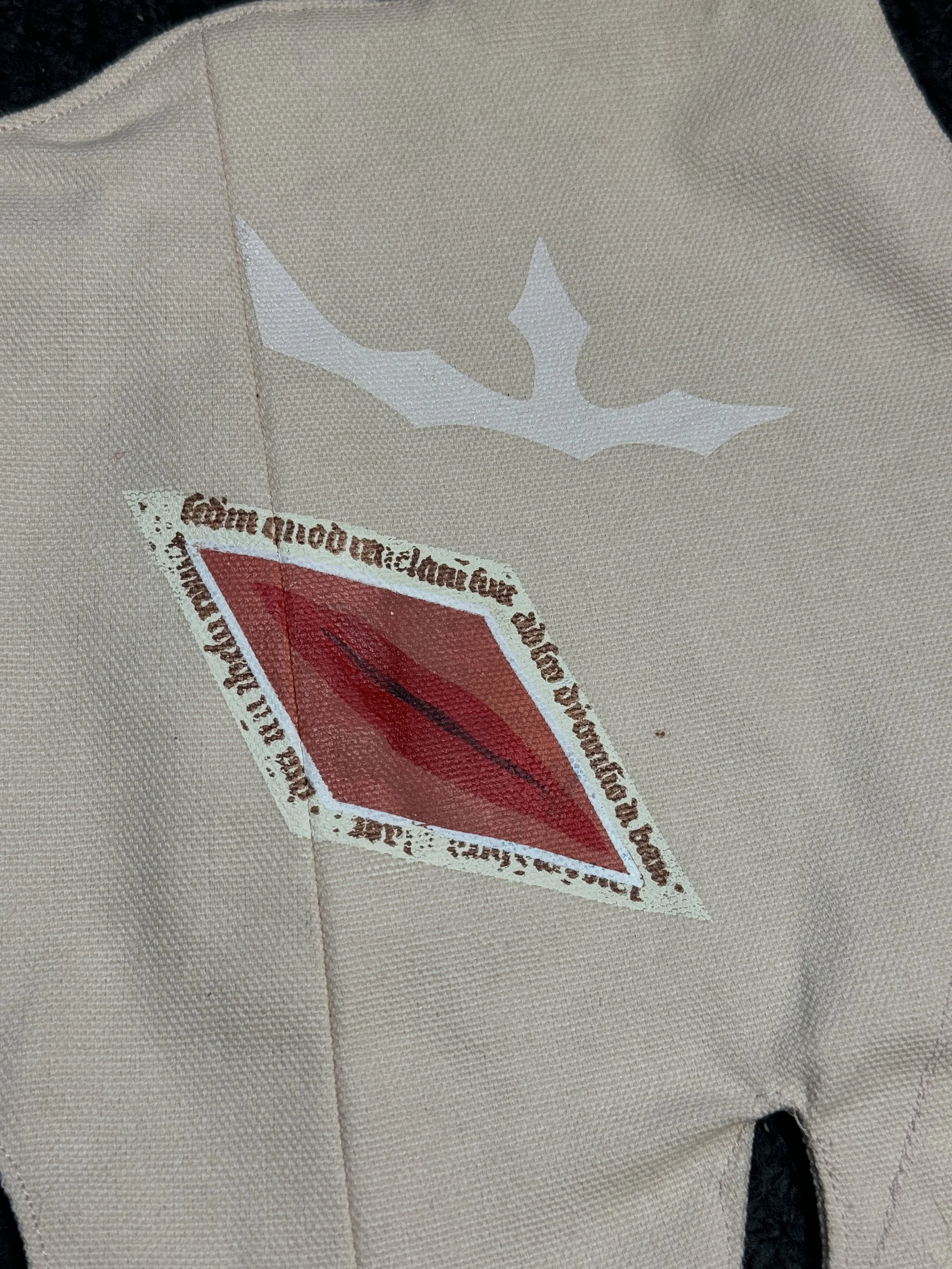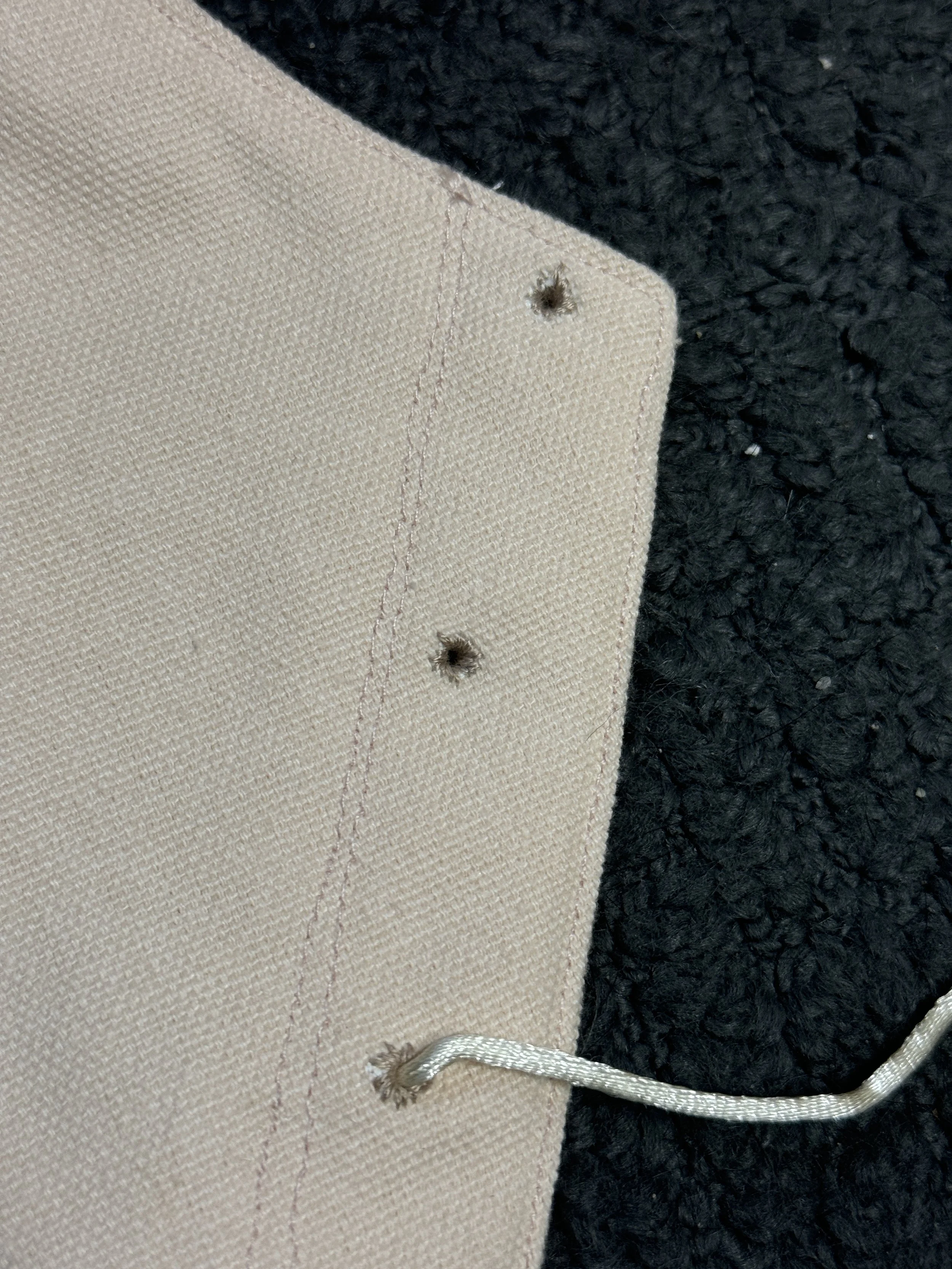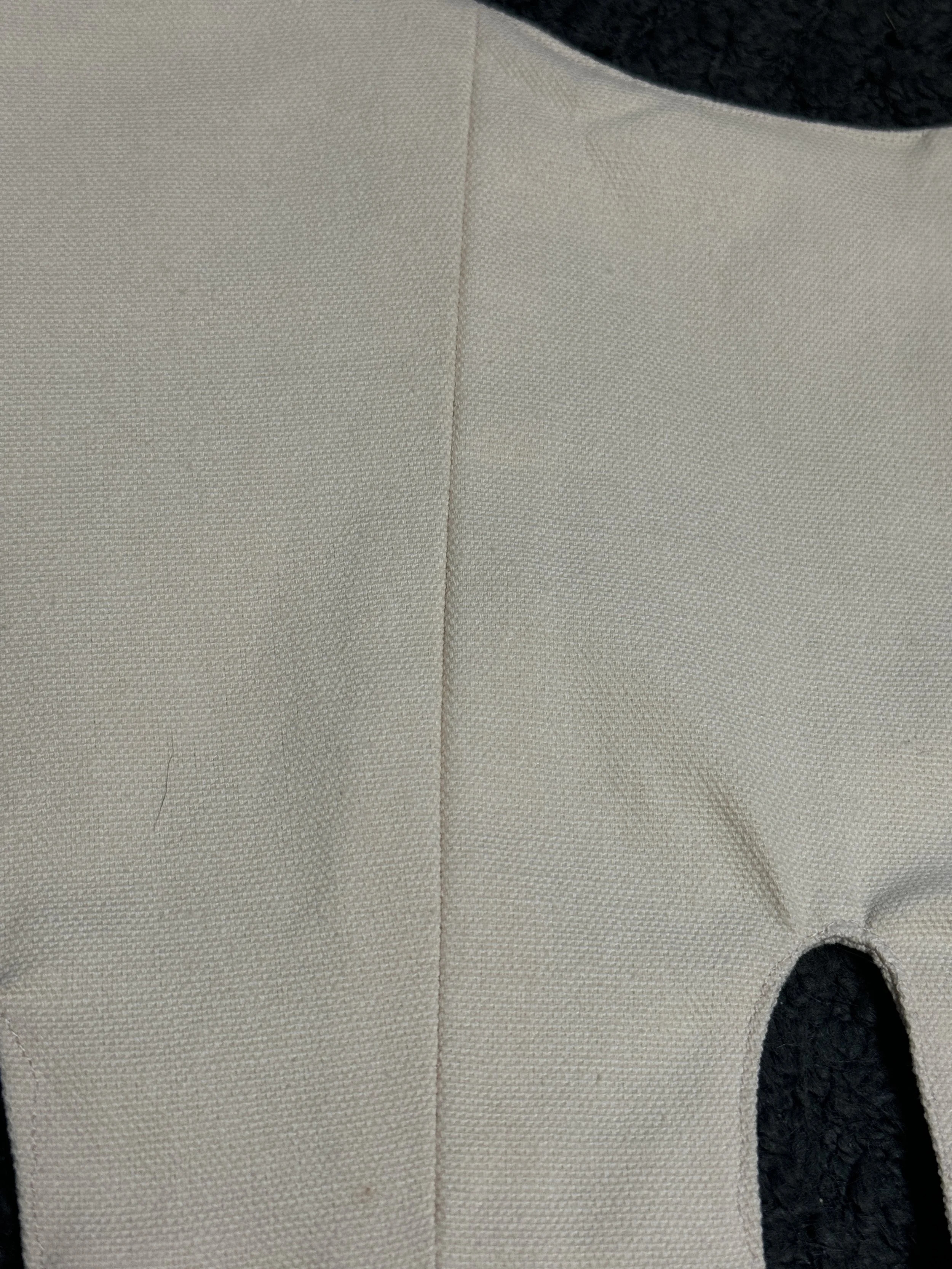Transcending Time







In this piece I wanted to highlight the timeless aspect of gender diversity even, and especially, in time periods where people were forced to hide these identities.
The base garment is sewn from a pattern directly adapted from a 1790s pair of jumps (a less structured version of a more traditional pair of regency era stays also known as a short corset) that are currently held at Hereford Museum in the UK, this is a garment that would typically have been worn by a young lady as an undergarment during the late eighteenth and early nineteenth centuries. Through weeks of trial and error, I adapted this historical pattern to my measurements and constructed the garment to be as historically accurate as possible though both the techniques used as well as the material chosen.
The screenprinted imagery on the garment contains stylized top surgery scars and a simplified representation of Jesus Christ’s side wound based on how it was represented in a surviving book of hours from the mid fifteenth century. It is agreed upon by many biblical scholars that Christ’s side wound in the painting I referenced as well as many others like it is intentionally reminiscent of a vulva. By using this specific imagery in the context of being printed on this otherwise historically accurate pair of stays I wanted to showcase the existence of transsexual and genderqueer people at a time when they were not visible or accepted as well as highlight that despite their invisibility, they still very much were there and were sacred. The imagery I chose to display on the garment as well as how I chose to print it creates an intentional anachronism by juxtaposing the historically accurate construction with a very visible representation of something that was very much invisible at the time when such garments were being worn and made. I chose to screenprint this imagery onto the garment (rather than embroidering or beading it which would have been more period accurate methods of decoration) to create an additional intentional anachronism as this method of transferring an image onto fabric was not widely used at the time.
Skills used: pattern drafting, pattern alteration, historical research, silkscreen printing, machine sewing, hand sewing, eyelets, edge stitching, lacing, alteration and fitting, corsetry
Originally displayed in the Paul M. Scott library at Montserrat College of Art






